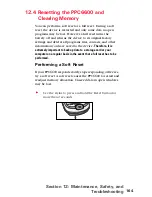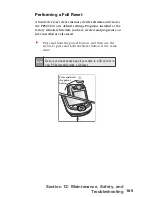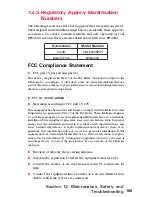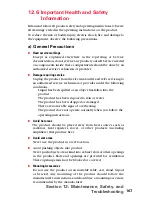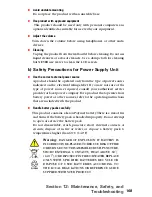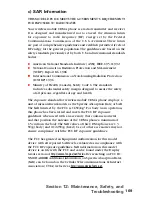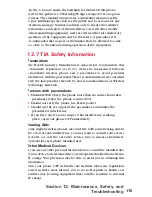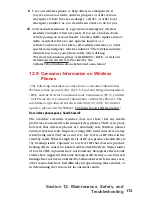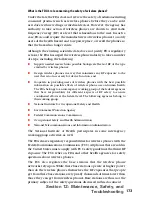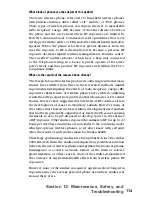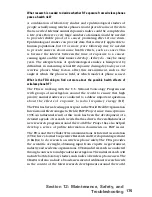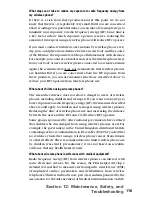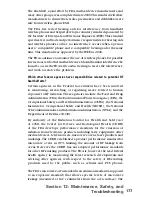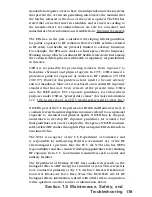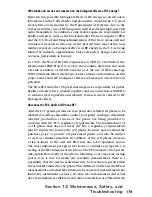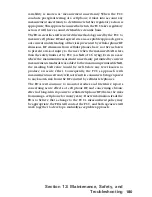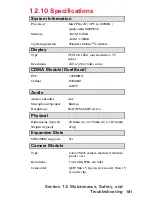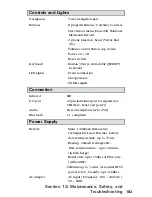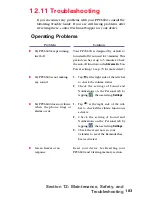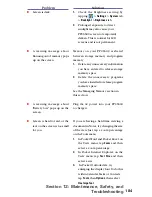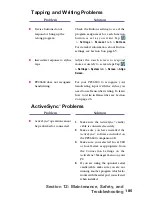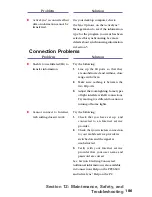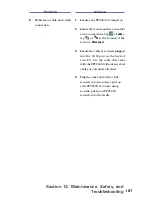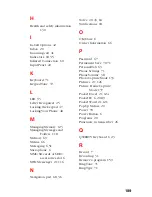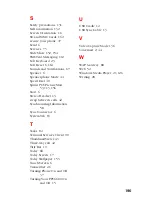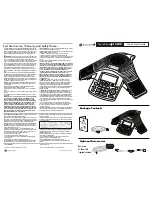
178
Section 12: Maintenance, Safety, and
Troubleshooting
standard also requires ovens to have two independent interlock systems
that prevent the oven from generating microwaves the moment that
the latch is released or the door of the oven is opened. The FDA has
stated that ovens that meet its standards and are used according to
the manufacturer's recommendations are safe for consumer and
industrial use. More information is available from:
http://www.fda.gov/cdrh
.
The EPA has, in the past, considered developing federal guidelines
for public exposure to RF radiation. However, EPA activities related
to RF safety and health are presently limited to advisory functions.
For example, the EPA now chairs an Inter-agency Radio frequency
Working Group, which coordinates RF health-related activities among
the various federal agencies with health or regulatory responsibilities
in this area.
OSHA is responsible for protecting workers from exposure to
hazardous chemical and physical agents. In 1971, OSHA issued a
protection guide for exposure of workers to RF radiation [29 CFR
1910.97]. However, this guide was later ruled to be only advisory
and not mandatory. Moreover, it was based on an earlier RF exposure
standard that has now been revised. At the present time, OSHA
uses the IEEE and/or FCC exposure guidelines for enforcement
purposes under OSHA's "general duty clause" (for more information
see:
http://www.osha-slc.gov/SLTC/radiofrequencyradiation./index.html
)
NIOSH is part of the U.S. Department of Health and Human Services. It
conducts research and investigations into issues related to occupational
exposure to chemical and physical agents. NIOSH has, in the past,
undertaken to develop RF exposure guidelines for workers, but
final guidelines were never adopted by the agency. NIOSH conducts
safety-related RF studies through its Physical Agents Effects Branch in
Cincinnati,Ohio.
The NTIA is an agency of the U.S. Department of Commerce and
is responsible for authorizing Federal Government use of the RF
electromagnetic spectrum. Like the FCC, the NTIA also has NEPA
responsibilities and has considered adopting guidelines for evaluating
RF exposure from U.S. Government transmitters such as radar and
military facilities.
The Department of Defense (DOD) has conducted research on the
biological effects of RF energy for a number of years. This research is
now conducted primarily at the U.S. Air Force Research Laboratory
located at Brooks Air Force Base, Texas. The DOD Web site for RF
biological effects information is listed with other sites in conjunction
with a question on other sources of information, below.

